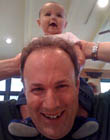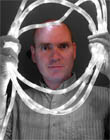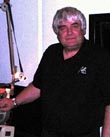|
|
This topic comprises 2 pages: 1 2
|
|
Author
|
Topic: House light cues...
|
|
|
|
|
|
|
|
|
|
|
|
|
|
|
|
|
Brad Miller
Administrator

Posts: 17775
From: Plano, TX (36.2 miles NW of Rockwall)
Registered: May 99
|
 posted 02-26-2000 12:59 AM
posted 02-26-2000 12:59 AM




On large auditoriums that have 2 or more dimmers, I like to go in and preset them differently so that when the trailers start, all of the lights up front by the screen extinguish completely, the lights over the center mass of seating dims "almost" out and the side rows of lights by the side walls stay more towards "up". This makes a nice blend. When the feature starts, ALL lights go out completely. In theaters which have only one dimmer pack I prefer to at least go in and slow the dim rate a bit to make things more smooth. Half lights during the trailers and credits are a MUST for stadium seating theaters and insurance purposes. There is nothing more annoying to me than ceiling lights that do not extinguish all the way, as I wear glasses and the lights can reflect on my lenses which is an incredible distraction. I also cannot stand wall lights that are placed too close to the screen so that they wash out the sides of the image. Those lights should be removed completely. Ushers in my opinion should not even be allowed into the theater until the rating tag is over!
| IP: Logged
|
|
Joe Redifer
You need a beating today

Posts: 12859
From: Denver, Colorado
Registered: May 99
|
 posted 02-26-2000 03:41 AM
posted 02-26-2000 03:41 AM





My theatre used to have wall sconces in every single auditorium that could not dim completely because of the way they were wired to the dimmers. I bitched and moaned to the techs who wired them. I then realized that I was on my own. I had to completely rewire and pull some relays out of the dimmers, and rewire a half of the automations (for the small houses with only one dimmer), but now every single light goes out completely like they should, and they come up when they should as well. The response from the techs when they found out what I did: "Gee, we'll have to remember that when we install our next booth."As for the lights to mid cue, I like to put mine after the director's name if that is the first credit. It works best when the director's name appears stationary, fades away, and then the rest of the credits start to roll. Slow fading of lights is a MUST. When they come up too quick, it literally jolts you back into reality instead of bringing you back softly and peacefully. Same with the lights fading out. If they fade too quickly, you don't experience the anticipation of seeing a cool movie.
| IP: Logged
|
|
Randy Stankey
Film God

Posts: 6539
From: Erie, Pennsylvania
Registered: Jun 99
|
 posted 02-27-2000 01:18 AM
posted 02-27-2000 01:18 AM




If I had my choice I'd leave the lights down until the end. Problem is that other people don't see it that way. (Late-commers, insurance, people leaving early, etc.) When you're in the customer service business, you HAVE to do the things your customers like. If customers want it light (or dark), do it! They pay the bills.Our automation uses a Center cue (Proximity) for lights up to 1/2. I HATE that! You can see it on the screen! I spend a lot of time trying to figure out how to hide it. Here's what I've discovered: 1) If the end of the movie "hard cuts" to black, that's easy. The sudden darkness makes it very hard to notice if you make the cue small. Just put it on the first frame line after the "cut". 2) If the film is hard matte in FLAT, make the cues small enough to fit in the black space between frames. If your automation needs a sustained pulse put 3 or 4 of them right in a row. (Provided your automation doesn't interpret that as something else. -- My failsafe/detector (FM-35) interprets any string of cues that are less than 5 frames apart as if it were one long cue.) 3) If it's "Credits-over-picture" (I HATE that!) put your cue sideways along the frame line. If you think your fs/det will miss that, stack them as above. As far as I know, most proximity sensors are capable of operating in the KHz range with a delay of =< 1 milisecond between pulses. A piece of 5/16 foil tape moving at 18 inches/sec is well within that range. The limiting factor is, "Can your automation pick up the pulse?" ...Opinions?
| IP: Logged
|
|
|
|
John Pytlak
Film God

Posts: 9987
From: Rochester, NY 14650-1922
Registered: Jan 2000
|
 posted 02-28-2000 07:34 AM
posted 02-28-2000 07:34 AM





My personal opinion is that slowly bringing up the house lights to a "dim" position during the closing credits is acceptable, and usually a good idea for safety reasons, as many people get up to leave as the credits roll. I always honor the artists that worked on the film by staying for all the credits --- I also like finding the names of people I know. If possible, be sure the ceiling lights are not aimed at the screen, so the image is not washed out by bringing up the lights part way. Never deliberately bring up lights that flood the screen while film is still being projected.I discussed "contrast killers" in the article I wrote for the December 1999 issue of "Film Notes for Reel People":
http://www.kodak.com/US/en/motion/newsletters/reel/december99/pytlak.shtml ------------------
John P. Pytlak, Senior Technical Specialist
Worldwide Technical Services, Professional Motion Imaging
Eastman Kodak Company
Research Labs, Building 69, Room 7419
Rochester, New York, 14650-1922 USA
Tel: 716-477-5325 Fax: 716-722-7243
E-Mail: john.pytlak@kodak.com
| IP: Logged
|
|
|
|
|
|
|
|
All times are Central (GMT -6:00)
|
This topic comprises 2 pages: 1 2
|
Powered by Infopop Corporation
UBB.classicTM
6.3.1.2
The Film-Tech Forums are designed for various members related to the cinema industry to express their opinions, viewpoints and testimonials on various products, services and events based upon speculation, personal knowledge and factual information through use, therefore all views represented here allow no liability upon the publishers of this web site and the owners of said views assume no liability for any ill will resulting from these postings. The posts made here are for educational as well as entertainment purposes and as such anyone viewing this portion of the website must accept these views as statements of the author of that opinion
and agrees to release the authors from any and all liability.
|

 Home
Home
 Products
Products
 Store
Store
 Forum
Forum
 Warehouse
Warehouse
 Contact Us
Contact Us




 Printer-friendly view of this topic
Printer-friendly view of this topic




















